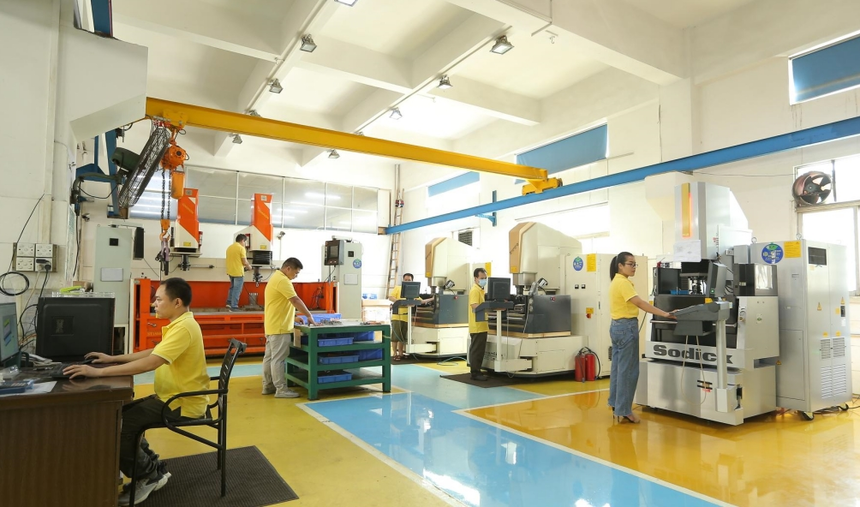|
Principle of EDM Processing
The fundamental tenet of EDM Processing is the electro-corrosion phenomenon that occurs during pulsed spark discharge between the tool and the workpiece electrode (positive and negative electrodes), which is used to remove extra metal. Instantaneously after the electric spark is discharged, a significant quantity of heat is produced in the spark channel, reaching a high temperature sufficient to melt and gasify any metal substance locally and etch away material to create a discharge pit. The principle of EDM processing is that the workpiece and the tool are respectively connected to two different polarity output ends of the pulse power supply, and the automatic feed adjustment device keeps a nearly equal discharge gap between the workpiece and the electrode. After the pulse voltage is applied between the two electrodes, the medium of the working fluid will be broken down at the place where the gap is the smallest or where the insulation strength is the lowest, forming a discharge spark. The instantaneous high temperature of the plasma in the discharge channel causes a small part of the material to be etched away on the surface of the workpiece and the electrode, forming a tiny discharge pit. After the pulse discharge ends, after some time, the working fluid restores its insulation, and the next pulse voltage is applied to the two poles, and another cycle is also performed to form another small pit. When this process is repeated at a fairly high frequency, the tool electrode adjusts its relative position to the workpiece without any plans to process the required parts. From a microscopic point of view, the processed surface is composed of many small pulse discharge pits. EDM Processing ConditionsEDM Processing is typically performed in liquid media, and the initial stage of pulse discharge is the breakdown of the medium between electrodes. Different contaminants can be found in the liquid medium used between the two electrodes. These impurities are drawn to the region with the strongest electric field intensity when there is an electric field. To minimize the breakdown voltage of the gap and shorten the actual distance between electrodes, a specific contact bridge is built along the power line. As a result, the electric field intensity is significantly boosted while maintaining the same voltage. EDM Processing CharacteristicsUnder the action of an electric field, electrons move toward the anode at high speed, and hit neutral molecules and atoms in the medium during the motion, resulting in impact ionization, forming negatively charged particles (mainly electrons) and positively charged particles (positrons), resulting in charged an avalanche of particles. When the electrons reach the anode, the medium is broken down, spark discharge is generated, and a conductive channel is formed, and then the energy accumulated in the power supply is injected into the discharge point and the gap between the two poles along the discharge channel. The electric erosion effect when the spark discharge is generated between the two electrodes is used to etch away the excess metal material, so as to meet the predetermined processing requirements for the size, shape and surface quality of the parts.  Characteristics of EDM Processing
Basic Conditions of EDM Processing
|








